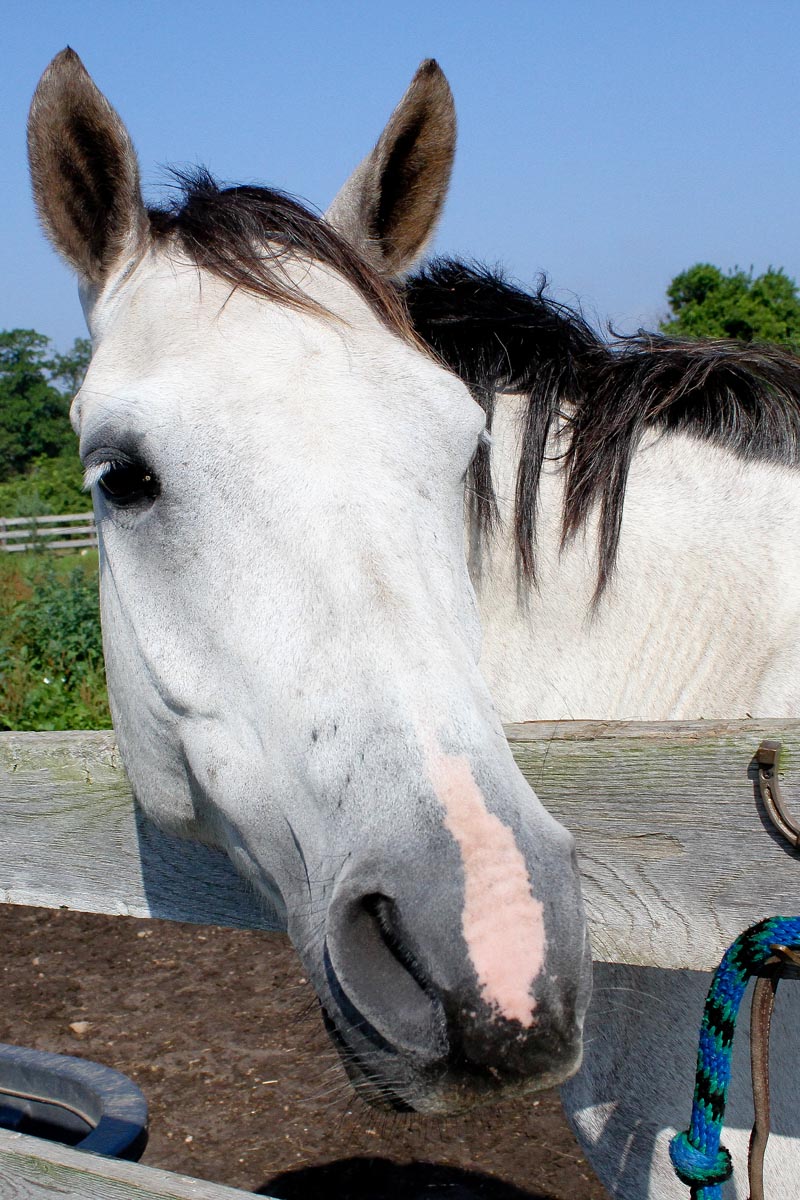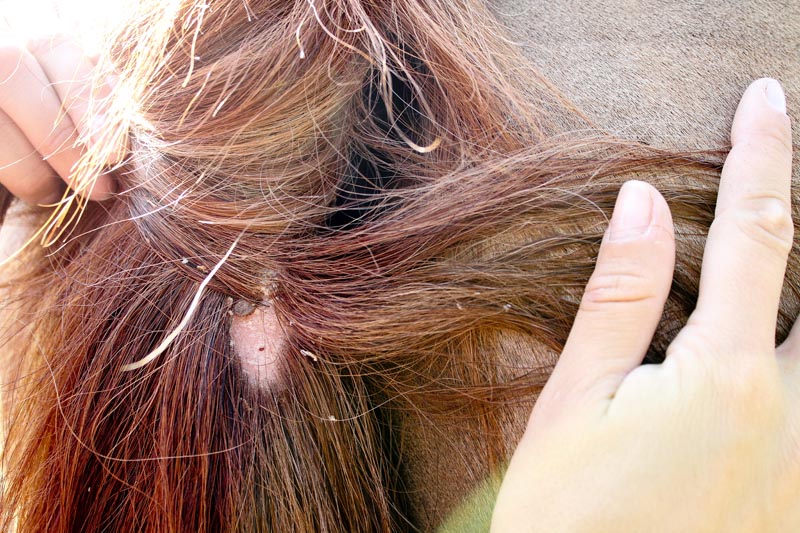Check yourself, check the children, check the cats and dogs. And when it comes to checking for ticks, don’t forget about horses. Equestrians on the Vineyard and throughout New England are now constantly on the lookout for Lyme disease symptoms in horses.
“They’re lethargic, they have a high temperature, feel like they’re off, they might look lame,” said Martha’s Vineyard Horse Council president Julie Flanders, describing the varied symptoms of Lyme disease in horses. “They will often drop weight quickly. I had a friend’s horse that dropped 120 pounds in two weeks.”
Ms. Flanders and other horse owners take preventive measures to keep ticks at bay in the paddocks, mowing fields regularly to keep grass short and using a product called Damminix, a tube containing a pesticide-infused cotton ball now commonly placed in fields to kill disease-carrying deer ticks on white-footed mice. Horse owners also use Equi-spot, a tick and fly repellent, on their animals.
Ms. Flanders said some Island equestrians whose animals develop Lyme disease send their horses to the South Shore Equine Clinic and Diagnostic Center in Plympton for intravenous antibiotic treatment. Oral doxycycline is also used, although Ms. Flanders said she is not convinced it is as effective.
Dr. Mark Reilly, a veterinarian at the south shore clinic, said he and his partner, Dr. Linda Cimetti, take care of about 300 horses on the Island. He estimated that about 25 per cent of horses in the Northeast are clinically infected with Lyme disease. This spring was an especially bad year, he said.
“It was a banner season for ticks,” Dr. Reilly said in a telephone interview. “I don’t have numbers yet, but I can tell you we haven’t stopped treating for Lyme — usually we have a lull in January and February and again in June and July, and we haven’t had that.” He continued:
“Awareness is there: people are doing more testing and because of that we’re uncovering more than in the past. I think because we’re testing more often, we’re finding out a lot more about the subtleties to the disease . . . we’ve tested over 1,500 horses in the past five or six years.”
The clinic administers intravenous oxytetracycline for five to 10 days on site, followed by a oral oxytetracycline for two weeks. Dr. Reilly said the intravenous method is very effective.
“It’s a pain . . . for the horse; the owner is a little inconvenienced — but if you [compare intravenous treatment with] giving 50 tablets of doxycycline twice a day for who knows how long . . . you don’t have as many gastrointestinal disturbances and it’s quicker and it’s cheaper,” he said. “It’s better for your horse, it’s cheaper for the horse owner and it’s better medicine for the vet.”
Testing horses for Lyme disease is done using a blood test originally created for dogs. Dr. Reilly said the test provides results in 10 minutes. A reliable test can save the life of the horse, he said, recounting the story of an owner who considered euthanizing his horse due to its erratic behavior. The horse later tested positive for Lyme.
“We treated him for seven days and now he’s on an event course and competing and was sold to a higher-level barn out in Ohio,” Dr. Reilly said.
Constance Breese, a Vineyard veterinarian who takes care of about 400 horses on the Island, said she prescribes oral doxycycline for Lyme disease, usually for about 30 days. Dr. Breese uses a blood test created at the veterinary school at Cornell University, which can screen for different stages of the infection.
“You can identify if the animal is completely negative, recently infected or if it’s a chronic infection — for horses and dogs,” Dr. Breese said. The test helps to determine the length of the treatment.
Dr. Breese recently treated a horse that was asymptomatic but had a positive Lyme test.
“Horses are really athletic so sometimes the symptoms are picked up early on, but this horse didn’t have any performance problems. But it had behavioral changes, which we sometimes see [in horses] with Lyme,” she said. “It tested really high in the range of long-term chronic [disease].” Dr. Breese continued: “On the Vineyard, this is not new to us, but in other parts of the country [Lyme disease] is new and they don’t recognize it as quickly; it’s not first on their mind.”
At Pond View Farm in West Tisbury, trainer Sarah Doyle concurred that there appears to be an increasing prevalence of Lyme disease in horses.
“If you did a Lyme test on every horse on Martha’s Vineyard, I would imagine almost 50 per cent would come back positive,” Ms. Doyle said.
At Pond View, powdered doxycycline is the preferred treatment method for horses with Lyme disease, Ms. Doyle said.
She said the horse farm promotes widespread awareness about tick-borne illnesses among its equestrians, and even the youngest riders are taught to check the ponies twice a day for ticks.
Mary Ann Brock, who keeps seven horses at Misty Meadows farm in West Tisbury, is another Island equestrian who has grown hyper-aware of Lyme disease.
“I have many victims in my fields,” she said. She tests her horses every fall, “just to see where I am going into the winter so I can plan and I can treat. I usually have two out of seven minimum that are sick.” She continued:
“My fields are big enough we have so many deer wandering through. I mow my fields religiously, even though someone told me not to mow my fields more than twice a year. But that’s not in the horses’ best interest.”
Bob Hungerford, who has two Clydesdales and one Belgian on his farm in Chilmark, also called it a bad year for ticks.
“I have horses who were heavily feathered around the feet . . . every day, morning and night, we check around the feet, in early spring taking off a dozen or more ticks per horse, and those were the ones we could find,” he said.






Comments
Comment policy »